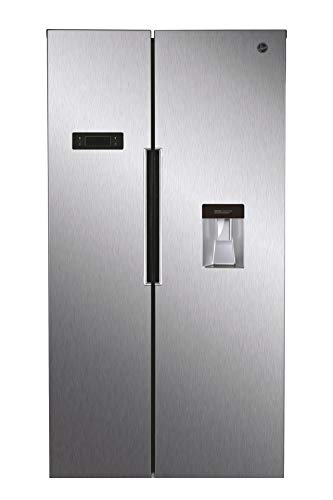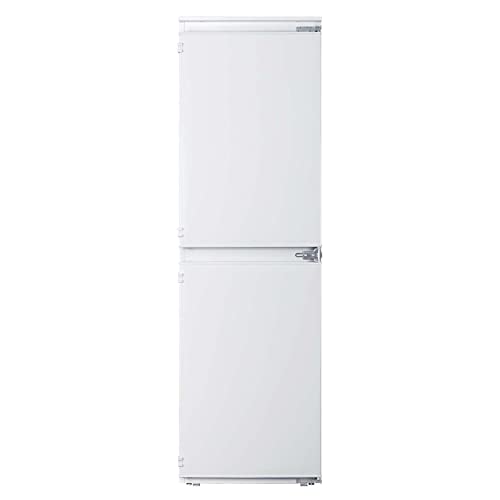HaymanWesley
HaymanWesley发表的博客

The Comprehensive Guide to Refrigerators in the UK
Fridges are an important device in every family, serving an essential function in food conservation and safety. The UK market provides a varied variety of fridge types, sizes, features, and brands. This article intends to provide an in-depth understanding of refrigerators readily available in the UK, including their features, energy effectiveness, and elements to think about when making a purchase.
Kinds Of Refrigerators Available in the UK
When trying to find a refrigerator, it is very important to understand the various types readily available. Each type comes with its own set of functions and functions, catering to different needs and preferences. The most common types of fridges found in the UK consist of:
1. Leading Freezer Refrigerators
- Description: The conventional style, including the freezer compartment on top.
- Pros: More budget friendly, roomy, easy access to fresh food.
- Cons: Limited freezer area, the top might be less practical for bulk products.
2. Bottom Freezer Refrigerators
- Description: Freezer lies at the bottom, permitting easier access to fresh food.
- Pros: Greater benefit, much better visibility of fresh items.
- Cons: Usually more expensive, some might fight with big frozen products.
3. Side-by-Side Refrigerators
- Description: Features two vertical compartments, one for the fridge and one for the freezer.
- Pros: Ample storage area, simple to gain access to both frozen and fresh foods.
- Cons: Wider footprint, they may not fit in smaller cooking areas.
4. French Door Refrigerators
- Description: Combines functions of bottom freezers Uk - video.2Yu.co, and side-by-sides, with two doors for the fridge on top.
- Pros: Stylish style, roomy, and frequently consists of sophisticated functions.
- Cons: Higher price point, aligns badly with smaller kitchen area designs.
5. Compact Refrigerators
- Description: Smaller models developed for restricted spaces.
- Pros: Ideal for little homes or workplaces, energy-efficient.
- Cons: Limited storage capability, may do not have functions.
6. Integrated Refrigerators
- Description: Designed to mix effortlessly with cooking area cabinets.
- Pros: Custom fit, visual appeal, increases home value.
- Cons: Higher cost, may provide less versatility in positioning.
7. Smart Refrigerators
- Description: Equipped with Wi-Fi and wise technology features.
- Pros: Advanced features like touch screens and internal cams.
- Cons: Expensive, more complicated to fix.
| Refrigerator Type | Accessibility | Average Price Range | Energy Efficiency |
|---|---|---|---|
| Top Freezer | Moderate | ₤ 300 - ₤ 600 | Typical |
| Bottom Freezer | High | ₤ 400 - ₤ 800 | Above Average |
| Side-by-Side | Easy | ₤ 800 - ₤ 1500 | Differs |
| French Door | High | ₤ 800 - ₤ 2000 | High |
| Compact | Limited | ₤ 200 - ₤ 500 | Average |
| Integrated | Customized | ₤ 1000 - ₤ 2500 | High |
| Smart | Variable | ₤ 1200+ | High |
Key Features to Consider
- Energy Efficiency: Look for designs that are energy-efficient. In the UK, appliances are rated from A (most efficient) to G (least efficient). An A+ score and above can lead to considerable energy savings.
- Capacity: Choose a fridge with enough capacity for your family. A basic guideline is 100-200 liters per person.
- Noise Level: Consider designs that run silently, particularly if the kitchen is near living areas.
- Cooling Technology: Features like frost-free technology are worth the financial investment, as they lessen maintenance.
- Adjustable Shelves: Having adjustable shelves boosts the versatility to keep bigger products.
- Temperature level Control: Check for user friendly temperature level controls and zones for various types of food.
- Design: Choose the style and color that matches your kitchen area aesthetic, whether you prefer a modern stainless steel appearance or a timeless retro finish.
Purchasing Tips
- Determine Your Needs: Consider your cooking habits, household size, and kitchen area space.
- Set a Budget: Refrigerators come in numerous cost ranges. Develop a spending plan before you start shopping.
- Research Energy Ratings: Invest in energy-efficient models to minimize utility costs.
- Check out Reviews: User experiences can supply insights into dependability and efficiency.
- Compare Brands: Some brand names are known for their durability while others might offer more innovative features.
Often Asked Questions (FAQs)
1. For how long do refrigerators normally last?
- Fridges typically last between 10 to 20 years, depending on the brand name and how well they are maintained.
2. Exist any upkeep suggestions for lengthening the life of a refrigerator?
- Regularly clean the coils, check the door seals, and periodically defrost if necessary to maintain optimal efficiency.
3. What is the very best size refrigerator for a family of four?
- For a family of 4, a refrigerator with a capability of around 400-600 liters is usually adequate.
4. Do I require to worry about energy intake when purchasing a refrigerator?

- Yes, energy consumption is very important. Look for systems with high energy effectiveness rankings to lower month-to-month costs.
5. Should I select a fridge with a water and ice dispenser?
- This feature can be hassle-free, specifically for households. However, it may need more upkeep than standard models.
Buying a refrigerator is a significant decision for any family in the UK. With numerous types offered, each with its distinct functions and benefits, it is crucial to evaluate private requirements before making a choice. By considering elements such as energy performance, capability, and style visual appeals, consumers can select a fridge that aligns well with their lifestyle, eventually boosting their kitchen experience while securing food quality and freshness.
